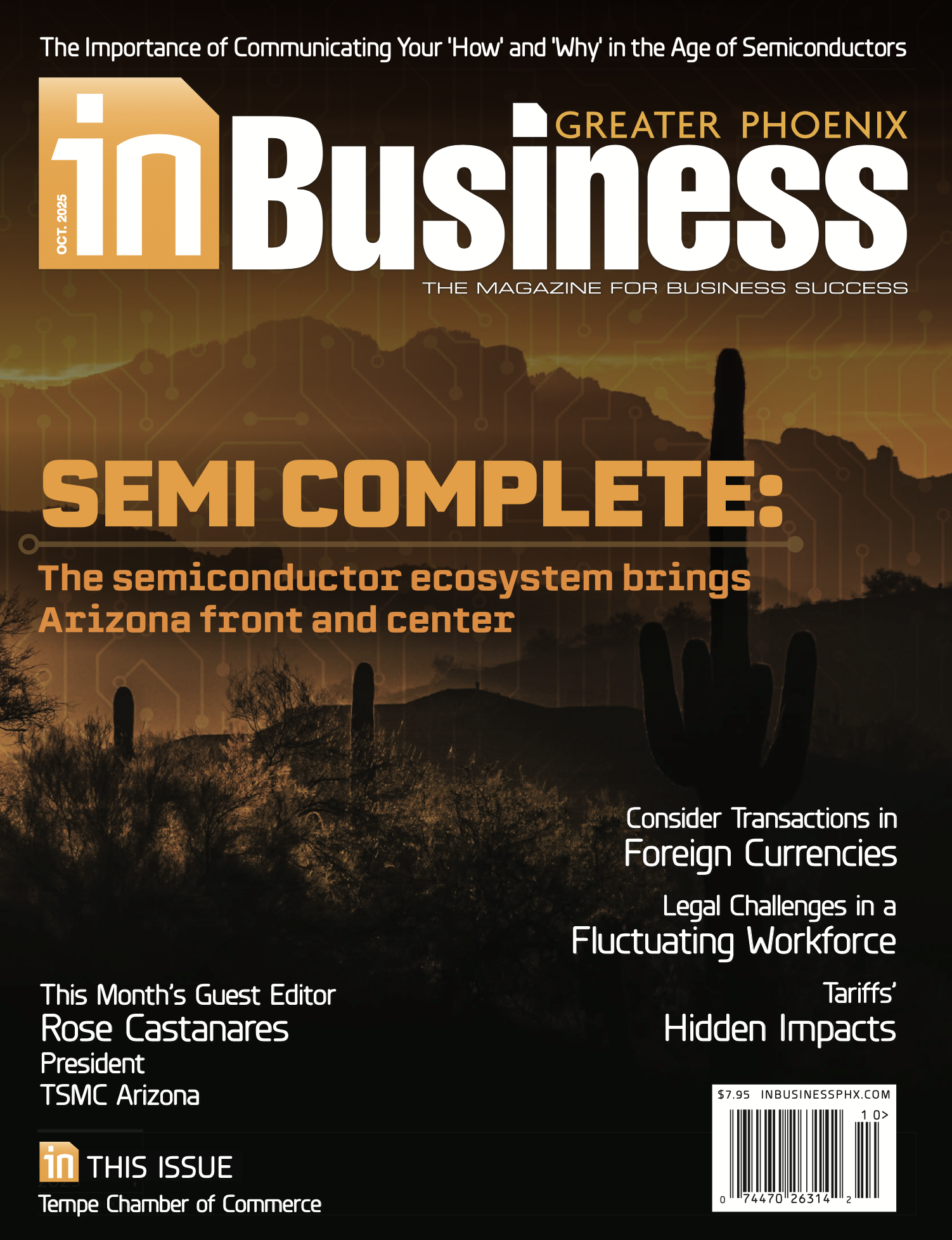 Amid national headlines of a market-correcting “normalization,” Phoenix’s industrial real estate market has shown remarkable resilience in 2024 as it returns to steady, pre-pandemic growth levels — a positive development for the industry.
Amid national headlines of a market-correcting “normalization,” Phoenix’s industrial real estate market has shown remarkable resilience in 2024 as it returns to steady, pre-pandemic growth levels — a positive development for the industry.
Unlike many parts of the country, Phoenix is experiencing a robust economic expansion, driven by the arrival of global semiconductor manufacturers and the expansion of existing ones, the CHIPS Act, increased U.S. nearshoring, corporate relocations and sustained population growth. This regional economic advancement is driving the need for more high-quality industrial development within the area.
Phoenix’s market stabilization is reflected in the steady increase of rents in certain submarkets and property sizes. Several factors support this tenant interest, notably the exodus of businesses from California seeking lower regulatory burdens and operating costs. Phoenix’s stable real estate costs, abundant labor and strong population growth make it an attractive alternative. In contrast to Southern California’s explosive rent increases (particularly in the Inland Empire) in the last five years, Phoenix experienced more moderate rent growth, which helped to position it as a sound and attractive market for industrial real estate.
This positive perspective doesn’t mean there won’t be some pain felt in the market. Most industrial submarkets of the Valley have seen an abundant supply of new development, and, in the past, the tenant leasing activity has generally kept pace with the new warehouse deliveries; however, some submarkets have experienced a significant increase of new supply coupled with a slowdown in new tenant demand. This has resulted in a softening of rents and an increase in landlord concessions in order to secure tenant leases.
CapRock Partners is at the forefront of Phoenix’s industrial market performance and is seeing consistent tenant interest and finalizing leases across the Phoenix region. The firm has been active in Phoenix since 2016 and has built a portfolio within the market set to reach 8 million square feet at full build-out.
CapRock recently acquired Longbow Industrial Park in Mesa. This state-of-the-art project is poised to meet the growing demand for new, efficient warehouse space. It features two buildings with 30-foot clear heights, 2,400 square feet of speculative office space, HVAC and LED lighting in the warehouse, dock packages, ESFR sprinklers, ample power and a secured 182-foot concrete truck court. The buildings can accommodate tenants ranging from 20,000 to 129,000 square feet, offering flexibility to suit various business needs.
Located in the Falcon Field submarket, Longbow Industrial Park provides excellent freeway access to Loop 202 and visibility on McDowell Road, a major east/west thoroughfare in the Valley. This prime location is ideal for corporate tenants in the semiconductor, lithium battery, aerospace, defense, e-commerce and construction materials industries. With major companies like Boeing, Amazon, Google and Apple already present, Mesa offers a unique mix of residential and commercial uses, a diverse workforce and excellent regional transportation access.
Showcasing its appetite for growth, CapRock continues to seek opportunities for existing building investments and land for ground-up development across the Phoenix area. The firm has been successful in acquiring assets in the southwest and southeast parts of the Valley and is interested in further expansion into more areas of the region.
CapRock Partners is committed to fostering economic development in Phoenix and contributing to the thriving logistics ecosystem in the Western U.S. Anticipating strong demand for modern warehouse space in the coming years and a decrease in land prices in some submarkets, the firm is well-positioned to acquire new assets and to provide top-tier industrial warehouse solutions for the region’s growing companies.
 Bob O’Neill is senior vice president, acquisitions, at CapRock Partners, a privately owned investor and developer of industrial real estate in the Western and Central U.S. Bob O’Neill is senior vice president, acquisitions, at CapRock Partners, a privately owned investor and developer of industrial real estate in the Western and Central U.S. |
This article is part of a feature comprised of a market view and three example projects.
















